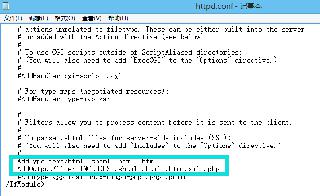python 使用Yolact訓(xùn)練自己的數(shù)據(jù)集
可能是由于yolact官方更新過其項目代碼,所以網(wǎng)上其他人的yolact訓(xùn)練使用的config文件和我的稍微有區(qū)別。但總體還是差不多的。
1:提前準備好自己的數(shù)據(jù)集使用labelme來制作分割數(shù)據(jù)集,但是得到的是一個個單獨的json文件。需要將其轉(zhuǎn)換成coco。labelme2coco.py如下所示(代碼來源:github鏈接):
import osimport jsonimport numpy as npimport globimport shutilfrom sklearn.model_selection import train_test_splitnp.random.seed(41)#0為背景,此處根據(jù)你數(shù)據(jù)集的類別來修改keyclassname_to_id = {'1': 1}class Lableme2CoCo: def __init__(self): self.images = [] self.annotations = [] self.categories = [] self.img_id = 0 self.ann_id = 0 def save_coco_json(self, instance, save_path): json.dump(instance, open(save_path, ’w’, encoding=’utf-8’), ensure_ascii=False, indent=1) # indent=2 更加美觀顯示 # 由json文件構(gòu)建COCO def to_coco(self, json_path_list): self._init_categories() for json_path in json_path_list: obj = self.read_jsonfile(json_path) self.images.append(self._image(obj, json_path)) shapes = obj[’shapes’] for shape in shapes: annotation = self._annotation(shape) self.annotations.append(annotation) self.ann_id += 1 self.img_id += 1 instance = {} instance[’info’] = ’spytensor created’ instance[’license’] = [’license’] instance[’images’] = self.images instance[’annotations’] = self.annotations instance[’categories’] = self.categories return instance # 構(gòu)建類別 def _init_categories(self): for k, v in classname_to_id.items(): category = {} category[’id’] = v category[’name’] = k self.categories.append(category) # 構(gòu)建COCO的image字段 def _image(self, obj, path): image = {} from labelme import utils img_x = utils.img_b64_to_arr(obj[’imageData’]) h, w = img_x.shape[:-1] image[’height’] = h image[’width’] = w image[’id’] = self.img_id image[’file_name’] = os.path.basename(path).replace('.json', '.jpg') return image # 構(gòu)建COCO的annotation字段 def _annotation(self, shape): label = shape[’label’] points = shape[’points’] annotation = {} annotation[’id’] = self.ann_id annotation[’image_id’] = self.img_id annotation[’category_id’] = int(classname_to_id[label]) annotation[’segmentation’] = [np.asarray(points).flatten().tolist()] annotation[’bbox’] = self._get_box(points) annotation[’iscrowd’] = 0 annotation[’area’] = 1.0 return annotation # 讀取json文件,返回一個json對象 def read_jsonfile(self, path): with open(path, 'r', encoding=’utf-8’) as f: return json.load(f) # COCO的格式: [x1,y1,w,h] 對應(yīng)COCO的bbox格式 def _get_box(self, points): min_x = min_y = np.inf max_x = max_y = 0 for x, y in points: min_x = min(min_x, x) min_y = min(min_y, y) max_x = max(max_x, x) max_y = max(max_y, y) return [min_x, min_y, max_x - min_x, max_y - min_y]if __name__ == ’__main__’: labelme_path = 'labelme/' # 此處根據(jù)你的數(shù)據(jù)集地址來修改 saved_coco_path = './' # 創(chuàng)建文件 if not os.path.exists('%scoco/annotations/'%saved_coco_path): os.makedirs('%scoco/annotations/'%saved_coco_path) if not os.path.exists('%scoco/images/train2017/'%saved_coco_path): os.makedirs('%scoco/images/train2017'%saved_coco_path) if not os.path.exists('%scoco/images/val2017/'%saved_coco_path): os.makedirs('%scoco/images/val2017'%saved_coco_path) # 獲取images目錄下所有的joson文件列表 json_list_path = glob.glob(labelme_path + '/*.json') # 數(shù)據(jù)劃分,這里沒有區(qū)分val2017和tran2017目錄,所有圖片都放在images目錄下 train_path, val_path = train_test_split(json_list_path, test_size=0.12) print('train_n:', len(train_path), ’val_n:’, len(val_path)) # 把訓(xùn)練集轉(zhuǎn)化為COCO的json格式 l2c_train = Lableme2CoCo() train_instance = l2c_train.to_coco(train_path) l2c_train.save_coco_json(train_instance, ’%scoco/annotations/instances_train2017.json’%saved_coco_path) for file in train_path: shutil.copy(file.replace('json','jpg'),'%scoco/images/train2017/'%saved_coco_path) for file in val_path: shutil.copy(file.replace('json','jpg'),'%scoco/images/val2017/'%saved_coco_path) # 把驗證集轉(zhuǎn)化為COCO的json格式 l2c_val = Lableme2CoCo() val_instance = l2c_val.to_coco(val_path) l2c_val.save_coco_json(val_instance, ’%scoco/annotations/instances_val2017.json’%saved_coco_path)
只需要修改兩個地方即可,然后放到data文件夾下。最后,得到的coco格式的數(shù)據(jù)集如下所示:

至此,數(shù)據(jù)準備已經(jīng)結(jié)束。
2:下載github存儲庫網(wǎng)址:YOLACT
之后解壓,但是我解壓的時候不知道為啥沒有yolact.py這個文件。后來又建了一個py文件,復(fù)制了里面的代碼。

下載權(quán)重文件,把權(quán)重文件放到y(tǒng)olact-master下的weights文件夾里(沒有就新建):


文件所在位置:

修改類別,把原本的coco的類別全部注釋掉,修改成自己的(如紅色框),注意COCO_CLASSES里有一個逗號。

修改數(shù)據(jù)集地址dataset_base:

修改coco_base_config(下面第二個橫線max_iter并不是控制訓(xùn)練輪數(shù)的,第二張圖中的max_iter才是)


cd到指定路徑下,執(zhí)行下面命令即可
python train.py --config=yolact_base_config
剛開始:

因為我是租的云服務(wù)器,在jupyter notebook里訓(xùn)練的。輸出的訓(xùn)練信息比較亂。
訓(xùn)練幾分鐘后:

主要看T后面的數(shù)字即可,好像他就是總的loss,如果它收斂了,按下Ctrl+C,即可中止訓(xùn)練,保存模型權(quán)重。
第一個問題:
PytorchStreamReader failed reading zip archive: failed finding central directory

第二個問題:(但是不知道為啥,我訓(xùn)練時如果中斷,保存的模型不能用來測試,會爆出下面的錯誤)
RuntimeError: unexpected EOF, expected *** more bytes. The file might be corruptrd
沒辦法解決,所以只能跑完,自動結(jié)束之后保存的模型拿來測試(自動保存的必中斷保存的要大十幾兆)
模型保存的格式:<config>_<epoch>_<iter>.pth。如果是中斷的:<config>_<epoch>_<iter>_interrupt.pth
5:測試使用官網(wǎng)的測試命令即可

以上就是python 使用Yolact訓(xùn)練自己的數(shù)據(jù)集的詳細內(nèi)容,更多關(guān)于python 訓(xùn)練數(shù)據(jù)集的資料請關(guān)注好吧啦網(wǎng)其它相關(guān)文章!
相關(guān)文章:

 網(wǎng)公網(wǎng)安備
網(wǎng)公網(wǎng)安備